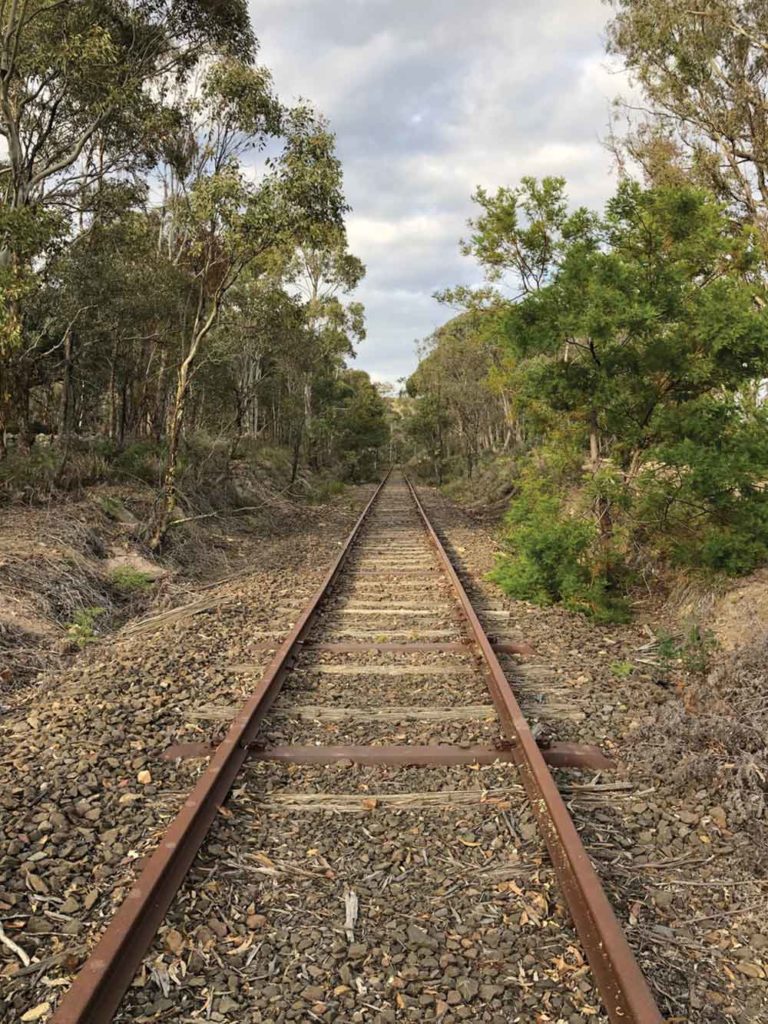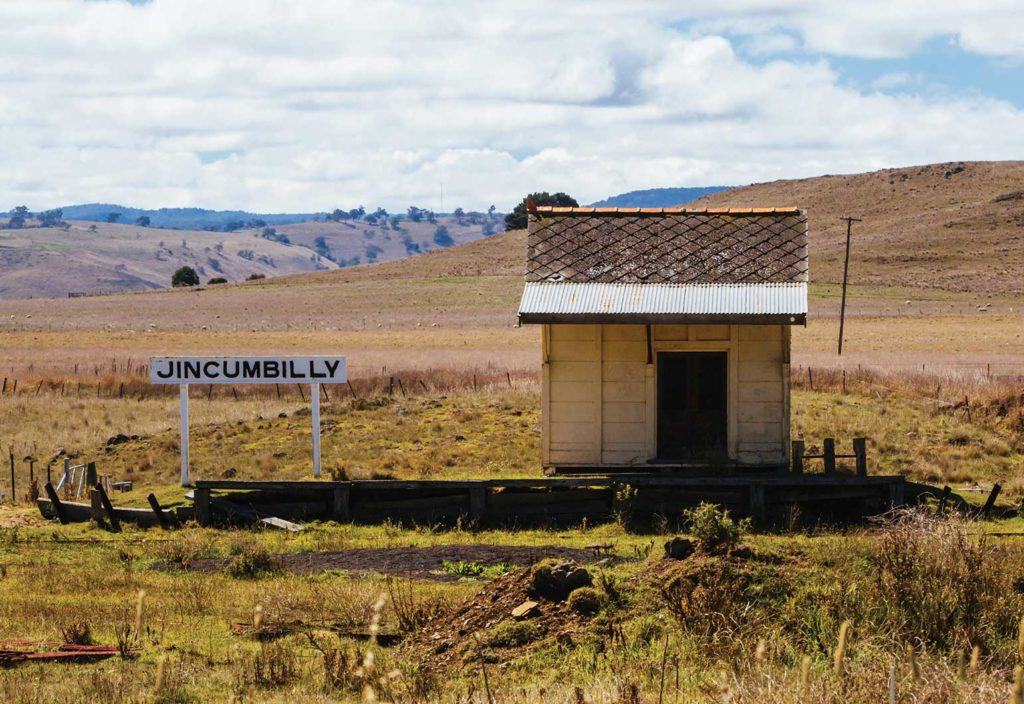How do you design a railway to safely deliver a freight train down an impossibly steep slope? For a recent Canberra to Eden proposal, the answer lay in history.
Since the earliest days of Canberra’s planning, a railway to the port of Eden was considered essential.
Back then, as is still argued today, it made clear economic sense. But there was a very serious problem in the form of a mountain range, and its precipitous — in terms of railway engineering — drop down the formidable terrain of the New South Wales South Coast Range to the deep-water harbour of Twofold Bay.

A railway was constructed, but only from Canberra’s neighbouring town of Queanbeyan to Bombala, on the inland side of the ranges and within 100 kilometres of Eden by road. Completed as far as Cooma in 1889, that line was closed exactly 100 years later.
Today, its rotting, rusting sleepers and tracks serve as a wonderland for bushwalkers, mountain bikers and historians from the Australian Capital Territory and its surrounds.
However, a plan has been put forward to breathe new life into that line, and to complete the construction of the railway to the port of Eden, as originally planned more than a century ago.
It’s a proposal that boldly solves the riddle of how to get freight trains safely down the mountain, minus the massive and prohibitive expense of tens of kilometres of tunnelling. And the economic argument still stands, too.
Solving an engineering puzzle
When engineer and economist Edwin Michell, founder of independent consultancy Stormcloud Engineering, was first approached by the Cooma and Monaro Progress Association (CMPA) to develop a concept plan for the Canberra to Eden railway, it was partly as a result of Michell’s work on his own website, hotrails.net.
Hot Rails is an advocacy and engineering blog that looks into faster rail in Australia, and how it can be achieved at much lower cost than what is generally being proposed.
“There is so much rail infrastructure in Australia that is literally rotting in the ground,” Michell said.
“These rail lines were originally built at great expense and with much hope for the future. However, in the second half of the 20th century, they were progressively abandoned. But the corridors are still there and still, I believe, have great potential for the next wave of infrastructure investment in this country.”
The CMPA, having seen on the website some work Michell conducted on the Sydney to Canberra line, asked if he could look into a proposal for Canberra to Eden, via Cooma.
“Their reasoning was because Eden has one of the best deep-water ports in Australia,” Michell said.
“There are really only four practical deep-water ports in New South Wales — Port Botany, Port Jackson, Newcastle and Wollongong – and they’re all at capacity and all suffer transport bottlenecks through Sydney. They’re at their natural limitations, so the rationale is to open a deep-water port on the south coast.”
However, Michell was immediately sceptical about the practicalities of running a freight railway from Bombala to Eden, which has an altitude difference of around 800 m and goes through very steep and rough terrain.
It would, he originally suspected, require around 20 km of tunnelling. This would consign the project to “financial impossibility”, he said.
“But as I looked into it, I was surprised to learn that there is a fairly favourable route down the mountain, which I based on work that was done over 100 years ago by Charles Scrivener, the surveyor who later had a large hand in the laying out of Canberra.”
Why can’t technology show us the obvious rail route? The answer, Michell said, is because it’s not obvious. Software is no substitute for detailed engineering knowledge and human analysis.
“You need to take into account things like national parks, private property, traditional ownership and cultural sites,” he said.
“And there are some culturally sensitive sites along the way. After meetings with Traditional Owners, we modified the route to avoid impacting on these sites, as this was not only a route identified by Scrivener, it was also an ancient pilgrimage track from the coast to Mount Kosciusko.”
Laying a railway
If this piece of infrastructure became a reality — a feasibility verdict awaits — what challenges would make up its construction?
From Canberra to Cooma and onwards to Bombala, the proposal is to mainly use the existing track, most of which is suitable to some extent. It would require resleepering, reballasting, and replacement of wooden structures with concrete, plus a handful of short deviations.
The main challenges begin once the going gets steep, Michell said.
“The terrain drops away very quickly,” he said.
“So the challenge is to follow the natural lay of the land and to find an arrangement of curves and switchbacks to keep the gradient to less than two per cent.
“There’s a lot of engineering required along the way, including bridges and viaducts, some up to a kilometre in length and up to 100 m high. Yet we managed to identify a route with very little tunnelling, as that is by far the biggest expense on a per kilometre basis. We kept the amount of tunnelling required to about one-and-a-half kilometres across three tunnels.”
Making economic sense
At an estimated cost of $2.9 billion — including provision for an expansion of the existing port of Eden — the Canberra to Eden railway is potentially more affordable than the expansion of current deep-water ports in cities that are already filled to bursting point. But is it economically viable?
Richard Hopkins, a civil engineer and a spokesperson for CMPA on the Canberra to Eden railway, says the economic and social benefits more than add up.
“The Federal Government has begun to fund inland freight rail from Melbourne to Brisbane, which involves upgrades of existing lines and some new construction and will cost around $11 billion,” he said.
“The proponents of that railway are also looking for east-west connectors to alternatives to Port Botany that provide for inland freight to go to the ocean.”
A Canberra to Eden railway would provide such a service, reducing dependence on the current choke points and providing a new route to a new deep-water port from the inland.
Railway specifications for Canberra to Eden
Gauge: 1435 mm
Tracks: single
Rail type: 60 kg /m standard carbon steel, head hardened, continuously welded
Sleepers: concrete, 600 mm centres (1660 per km)
Maximum freight train length: 1800 m
Maximum passenger train length: 150 m (length of Cooma platform)
Axle loading: max 25 t, typical 22 t
Design speed for freight trains: 115 km/hr (reducing to 40 km/hr on steep upgrades)
Design speed for tilting passenger trains: 160 km/hr
This article first appeared as “Capital to coast” in the October 2020 issue of create magazine.
